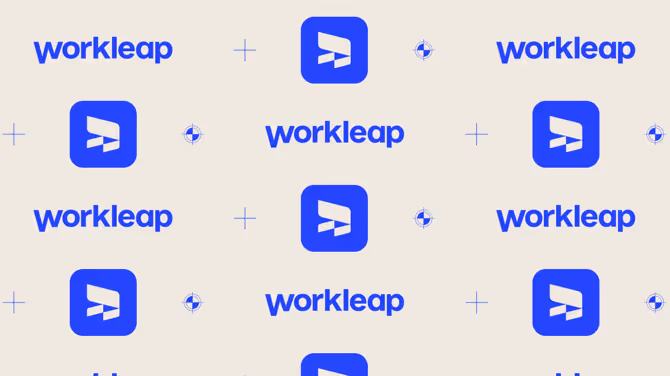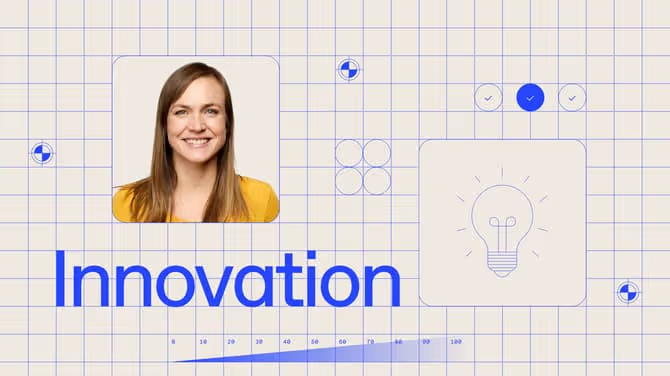Bring your product to the next level through M&As with Workleap

%20(1).png)
POV: You’ve built an amazing product and want to share it with the world. But as the founder of a young company, you’re bogged down by the day-to-day operations –– and it’s hard to focus on your long-term vision for the product. And building products? That’s the stuff you love to do.
Mergers and acquisitions (M&As) are great options for founders who want to focus on creating and refining their products. You don’t have to worry about things like raising capital or handling business admin tasks. To Robert Eanes, Founder of Pingboard and now Workleap’s VP of Product, that’s something he couldn’t pass up.
For founders interested in M&As, it’s important to explore this option early so you can find the best-fit acquirer. If you do, the benefits are plentiful: You can leverage their customer base, partners, expertise, and more –– all while feeling confident that your product is in good hands.
To shed light on this important topic for founders, we sat down with Catherine Ouellet-Dupuis, Workleap’s Chief Strategy & Corporate Development Officer, and Robert Eanes, Founder of Pingboard and now Workleap’s VP of Product. They share insights on Workleap’s successful acquisition of Pingboard and offer perspective on how to bring your product to the next level through the right M&A integration.
The TL;DR on Workleap’s acquisition of Pingboard
On December 6, 2023, Workleap acquired Pingboard.
Workleap builds software to help HR professionals boost their organizations’ employee experience — onboarding, engagement, recognition, performance, and more. When Workleap’s team came across Pingboard’s dynamic org chart and employee directory software, they knew they had to introduce themselves. Pingboard was the perfect addition to the Workleap solution.
Eanes, Pingboard’s founder, thought so too. After several emails, phone calls, and a meetup in Texas, they decided to join forces and bring Pingboard into the Workleap platform.
So, what did they do to ensure a seamless acquisition? What was Eanes looking for in an M&A opportunity? What advice can Ouellet-Dupuis give to interested founders? Let’s dive in.
Q: How did you know Workleap and Pingboard were a good match?
Ouellet–Dupuis: We’re looking for products that enhance the employee experience — that's always our focus.
Typically, org charts are clunky and boring. Pingboard figured out a way to make org charts really simple and created an engaging way to find out who’s who and build connections. So, the way Pingboard built its product caught our attention. We could see that it brings tremendous value to the customer. We could see that they were passionate. We could already see alignment, so we knew we needed to talk to them.
Eanes: Workleap checked off three boxes right away: It’s founder-led and profitable, it demonstrated culture fit, and it’s a product-focused company.
When Workleap first reached out to our CEO, I did some of my own research. I discovered that Workleap is founder-led, profitable, and was fully bootstrapped until last year. The money they raised recently was specifically to enable their acquisition strategy, not to fund the business. What this said to me was that they’re a profitable and strong company looking for the right expansion opportunities — not any expansion opportunity. That gave me confidence.
I also wanted to assess culture fit, so I looked at Glassdoor reviews and LinkedIn. They're imperfect signals, but they’re still signals. And in Workleap’s case, they were positive signals. That was important to me — my team’s fate, if you will, was top of mind.
As someone who builds products — and spent years building Pingboard — it probably comes as no surprise that I was looking to partner with quality products, too. During our first call, I was very observant of how they talked about their product and their interest in our product. Their communication felt very genuine and tailored. I was confident that they’d take care of our product.
Q: The perfect first call: What does it look like?
Eanes: Don’t start with numbers. There’s a time for that, but not during the first call. Get a feel for the company first. I think it was really important — for both Pingboard and Workleap — to ensure culture fit first. We asked questions like:
- Can you tell me more about your company values, why you chose them, and how they show up in your day-to-day operations?
- How would you describe your company culture and the attributes of your team members that you value most?
- Where do you envision your product and company in the next five years, and what key milestones are you aiming to achieve?
- How does my product fit in with your product suite? What are your plans for my product?
- What strategies do you have in place to innovate and adapt to market changes to ensure sustained growth?
Ouellet-Dupuis: Totally agree. During our first phone call, we just swapped product stories and shared our company values — those types of things. Then, we flew to Austin, Texas, to spend time with the exec team. We could see how they worked and interacted, their leadership style, what they valued. And they could do the same.
Q: What are some essential first steps for founders interested in selling their company to another product company like Workleap?
Eanes: It’s so important to get your stakeholders aligned before any moves are made. Whether that’s your co-founder or partner, your investors, or even your spouse! It’s important to consult those key players and discuss everyone’s expectations — on numbers, your roles, your people. You don’t want to hop on a fast-moving train and then realize you’re not going to the same destination.
Q: When should you start engaging potential acquirers?
Ouellet-Dupuis: Earlier the better! Look ahead and map out where you want your business to be — and what you need to get there. Who are the right partners? Are you looking for corporate or investment funds? These are important things to think about.
I think there's a common misconception that you can’t engage with anyone until you’re sure and ready to sell your business. Here's a tip: Instead of treating them solely as acquirers, think of them as partners! This makes the whole process less intimidating. Just focus on finding like-minded companies that you’d want to partner with.
Eanes: Yes, I’d double down on that. You should be thinking about your optionality as you build your company: what you can do to control your own destiny. We always had the option of selling in mind. Even though we planned on selling Pingboard in about 18 months, we were ready to consider this acquisition when Workleap approached us and even had time and space to explore alternative bids.
Ouellet-Dupuis: At Workleap, we’re looking for founders who are passionate about building products and want to continue doing so as part of our ecosystem. We’re here to take care of the business logistics, so founders can focus on refining their product and bringing more value to customers.
If that’s something you’d consider down the line, don’t hesitate to reach out to us — even if it’s super exploratory. If you’re considering the funding route instead, take time to identify the right investors to support you in your journey.
Q: Any final advice for interested founders?
Eanes: Sit down and write a list of what’s important to you. Before you enter any conversations with acquirers, you should already know your boundaries, your expectations, what you want, and what you don’t want. It’s easy to get caught up in conversations and bend your rules.
It’s okay if this list changes or evolves. After you consult your stakeholders, things may also change. But if you have this list at the ready, you’ll have conversations with the right acquirers — and will feel confident entering the discussions.
{emphasize}
💡Are you M&A curious? Do you want to connect with Catherine Ouellet-Dupuis' team and learn more about Workleap or the M&A space? Introduce yourself to Catherine on LinkedIn!
{emphasize}
The future of employee experience starts with you.





.avif)
.avif)

.avif)






